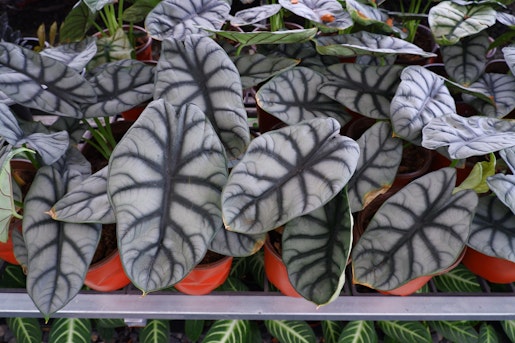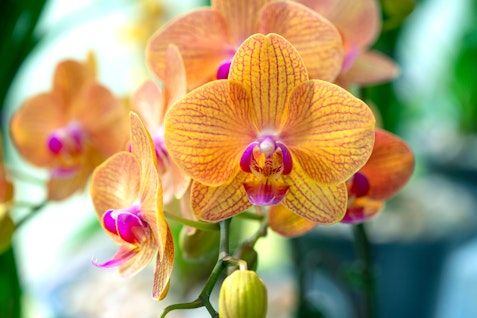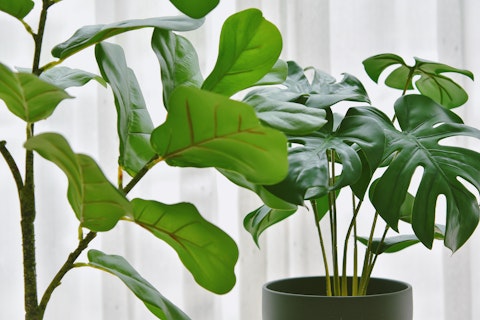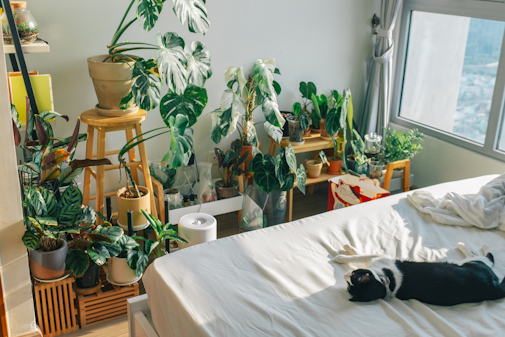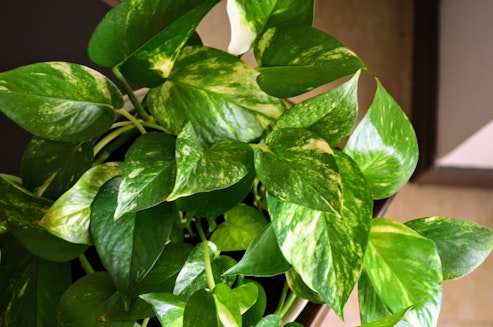
- Home
- An overview of the Hoya genus and an introduction to their care
Plant Knowledge
An overview of the Hoya genus and an introduction to their care
9th July 2021
Hannah Cockett
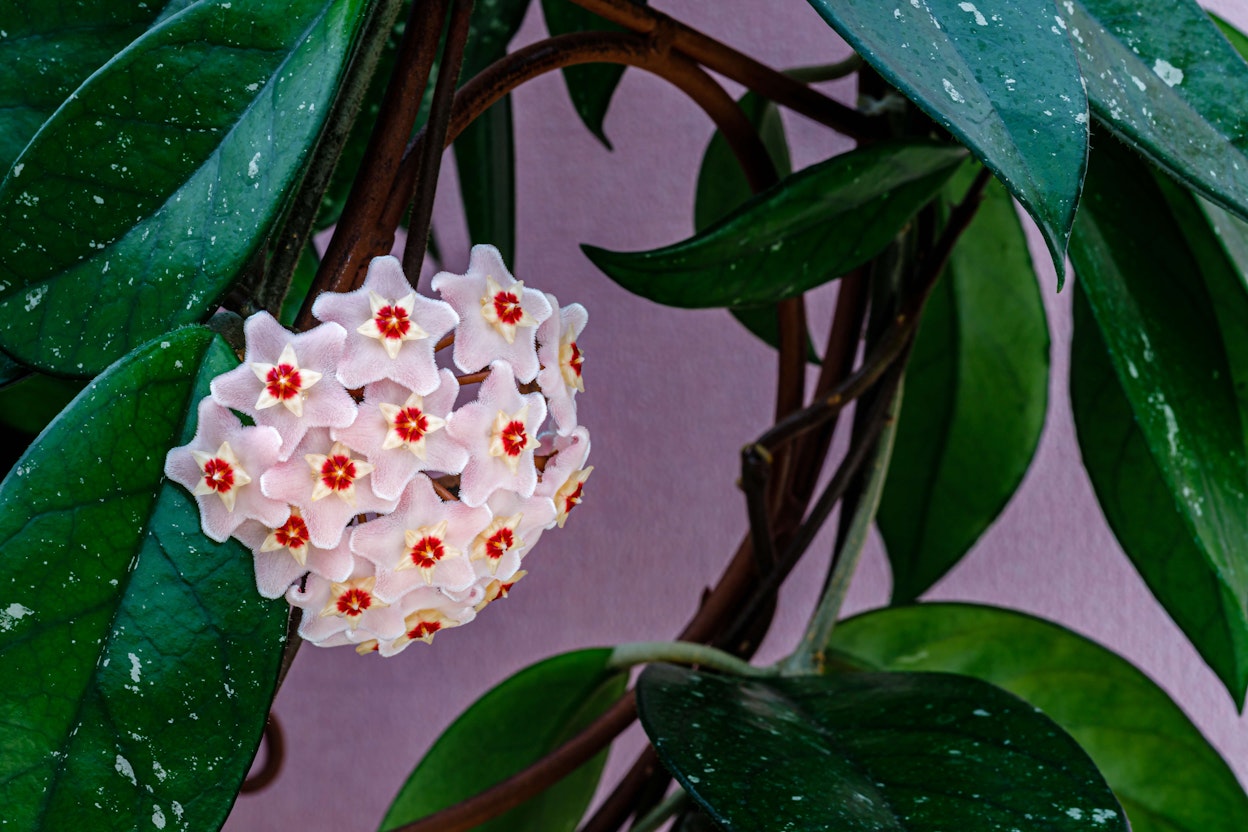
An overview of the Hoya genus and an introduction to their care by Hannah Cockett (Instagram @plantcreeep)
Hoya have been popular houseplants since their initial discovery over 200 years ago, but their popularity has begun to climb again in recent years, mostly because of the increasing demand for ornamental plants. You may have also heard Hoya referred to as wax plants because of the waxy look to the flowers when in bloom. They’re quite possibly my favourite genus of plants, in part because I find them to be super easy to care for, but also because the genus is so vast and diverse, plus there’s the chance you’ll experience a Hoya in bloom! This blog has been written to offer a deeper insight into the genus, hopefully providing you with some new information along the way. It also highlights their general care requirements, although as with all plants, specific care will depend on the species in question plus the environment you are able to provide.
Hoya are a genus of plants that belong to the Apocynaceae family, under the sub-family Asclepiadoideae. The genus was originally discovered by a Scottish botanist, Robert Brown, during an expedition to Western Australia in the early 1800’s. Hoya were given their name in honour of Browns friend and botanist, Thomas Hoy, who was the then head gardener to the Duke of Northumberland at Syon House. The Hoya genus is species rich, and they are native to tropical and subtropical forests within the Indo-Australian Archipelago. Most Hoya species are epiphytes, meaning they grow and clamber upon the surface of other plants, typically trees, yet they are not parasitic and derive no water or nutrients from the host plant, which acts only as support (the supporting plant is known as a phorophyte). The coarse surface of tree bark is their ideal habitat as it offers plenty of nooks and crannies for adventitious roots to grow into to anchor the Hoya to the host tree. The barks surface also helps capture leaf litter and other organic matter, which then becomes a source of nutrients for the developing Hoya. There are only a few species that do not grow as true epiphytes and instead are pendulous, such as H. linearis, or those that grow as terrestrial shrubs, such as H. medinillifolia. Some also may grow as lithophytes, growing appressed to rocky outcrops, such as H. lyi. As well as being highly sought after as ornamental plants, they are also used medicinally by many traditional tribal communities, such as the Chakma tribe who use the extract of H. parasitica to help aid in the relief of body pain and for the treatment of fever and by the people of Rema-Kalenga, who use the same extract to help in the treatment of jaundice.
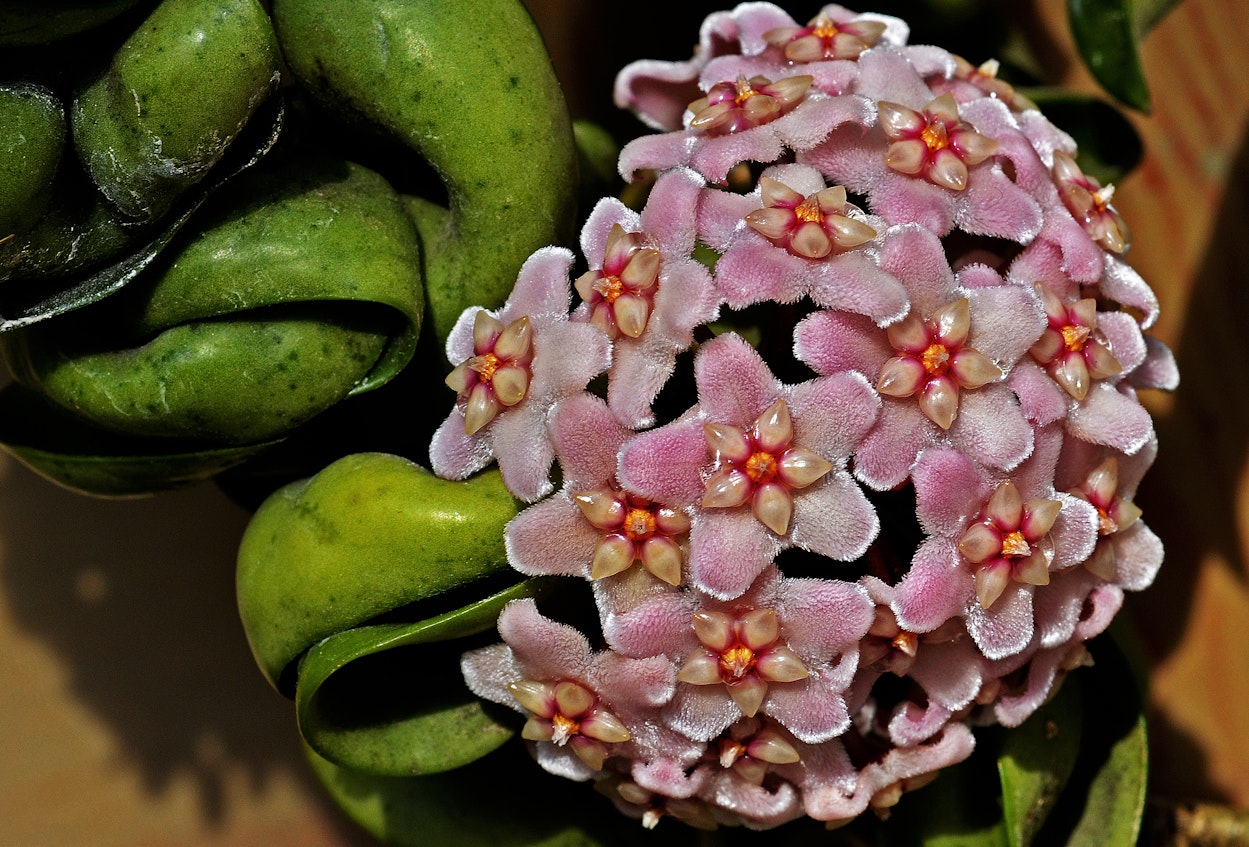
Although the Hoya genus is large, the exact number of species in existence is under review. There are over 800 named Hoya on the international plant name index, however it is estimated that the correct number of species lies somewhere between 350-450 species when considering the likely number of synonyms within the genus. New species are regularly discovered, and so the number of species is steadily climbing. Typically, species identification is achieved using morphological features, from foliar or reproductive characters. Many Hoya species can be difficult to distinguish from one another when studying foliage alone, and so identification often takes place using floral parts, such as the peduncles or flower clusters. However, when observed in the wild, flowers may not always be present, making identification in the field more difficult. After an initial identification has been made, biochemical and molecular methods may also be used to ensure the correct (or new) species name is assigned. Hoya leaves are typically either classed as succulent or non-succulent and the foliage can be highly variable across the genus, especially venation and size, with some species displaying leaves of only a few cm in both length and width, to H. latifolia, who’s leaves when mature can reportedly reach 25cm in length, and 15cm in width, leading to it often being called ‘Dinner plate Hoya’.

Many people choose to collect Hoya solely for their beautiful and often scented flowers, although sometimes they can have a pungent scent, rather than a pleasant one! The traits of flowers as previously mentioned can vary dramatically between species. This is a response to natural selection imposed by vectors of pollen (known as pollinator-mediated selection). Although Hoya pollination is well understood, pollination in the wild is understudied. From the limited studies conducted on pollination in the field, it appears that the predominant pollinator of Hoya are insects, as opposed to say nectar feeding bats or even birds! The scent produced by Hoya also varies widely between species and again is produced to attract the most efficient pollinators. For example, many species of Hoya such as H. pottsii and H. carnosa produce the strongest fragrance at night, suggesting the desire to attract nocturnal pollinators such as moths, with the Owl Moth (Erebus esphesperis) appearing to be the primary pollinator of H. carnosa and Hypopyra vespertilo, the primary pollinator of H. potsii. So, if you own a hoya and are lucky enough to experience it in bloom, compare the scent between day and night.
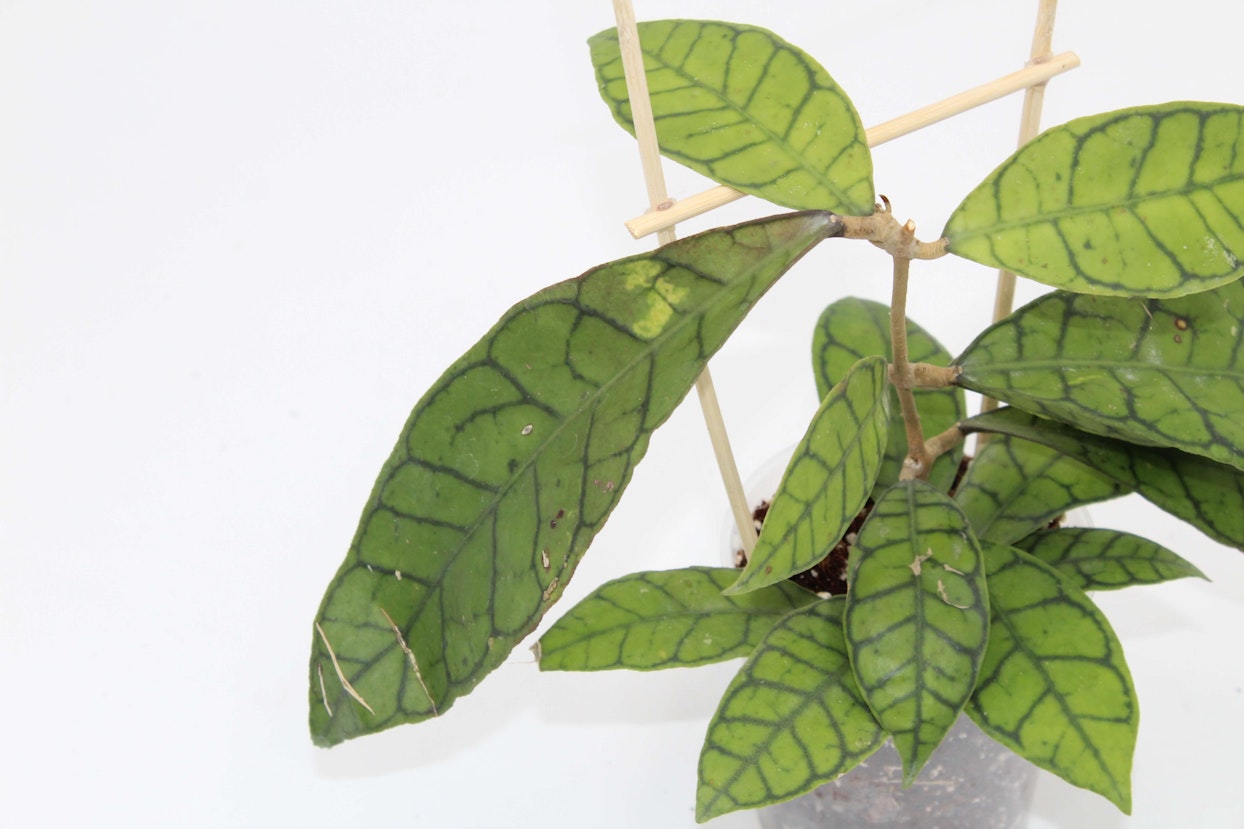
Flowers can grow singularly or in clusters, known as umbels. The number of flowers varies between species but is also influenced by growing conditions so is not an ideal trait to use for taxonomic purposes. They display in a range of colours, although interestingly no species so far discovered have displayed true blue flowers. Flowers are borne from a persistent penduncle, so don’t be tempted to remove this once the flowers have died back as it will produce flowers in again in the future. All Hoya flowers consist of the calyx (this is what initially encompasses the developing flower), the corolla (what we would typically call petals) and the corona. The flowers are of Hoya are always formed like 5 pointed stars.
Despite the beauty of the flowers, many of them also have equally beautiful foliage, with two opposed leaves at each node (except for the shingling Hoya imbricata). Variegation, splashing, and prominent veining being some of the most notable characteristics of Hoya leaves. Personally, it’s the foliage which attracts me, as flowers aren’t always a guarantee. If a Hoya blooms, then it’s a bonus! If the flowers are successfully pollinated, plumed seeds will develop, an adaptation that allows seeds to spread widely on the wind.
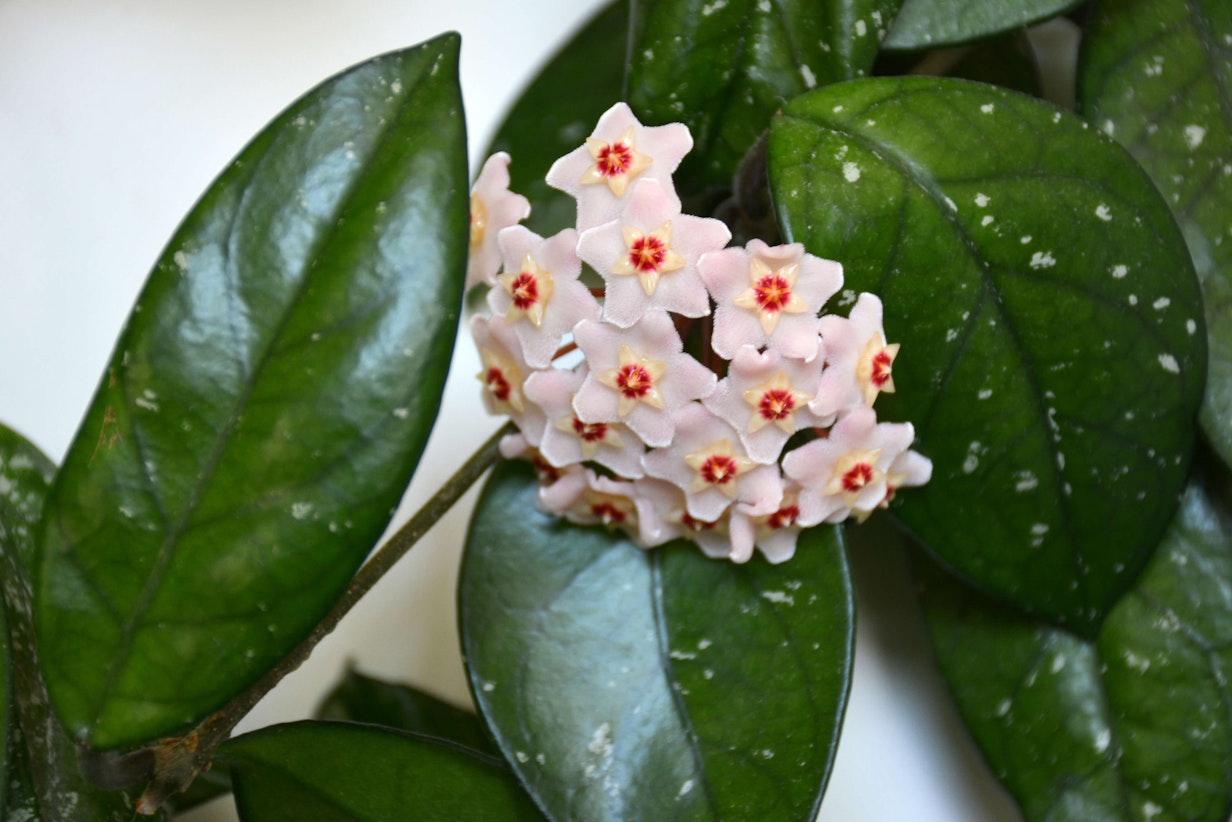
Lighting
There are several species of Hoya that will tolerate medium indirect light, typically these will be the species with larger and darker leaves, allowing them to utilise the available light more efficiently. Tolerate is the key word however, as this is lower than ideal light! If you want to give your Hoya the best opportunity to grow to their full potential, then providing them with bright indirect light will be best. Some species will tolerate several hours of direct light and many species in brighter positions can sun stress, which is a term given to the plant when it begins to turn shades of pink or red, and in some cases a deep purple/black. This is due to the production of the polyphenolic pigment, anthocyanin, which forms to prevent photodamage to the photosynthetic apparatus by absorbing excess visible light and UV light. This is similar to the way we produce melanin to help protect us from the sun! Although this can look pretty, be mindful that the leaves can still scorch if the light intensity gets too much, and they aren’t given the time to gradually build up this protection. If your Hoya is in a brightly lit spot but the leaves are beginning to look bleached or washed out, then this may be due to it getting too much light and it would prefer to be moved into a position with more diffused light (not all species will produce this anthocyanin for protection). If you notice slow growth and the internodal spacing between leaves becoming stretched out, your Hoya is probably in search of higher light, so move it somewhere a little brighter.
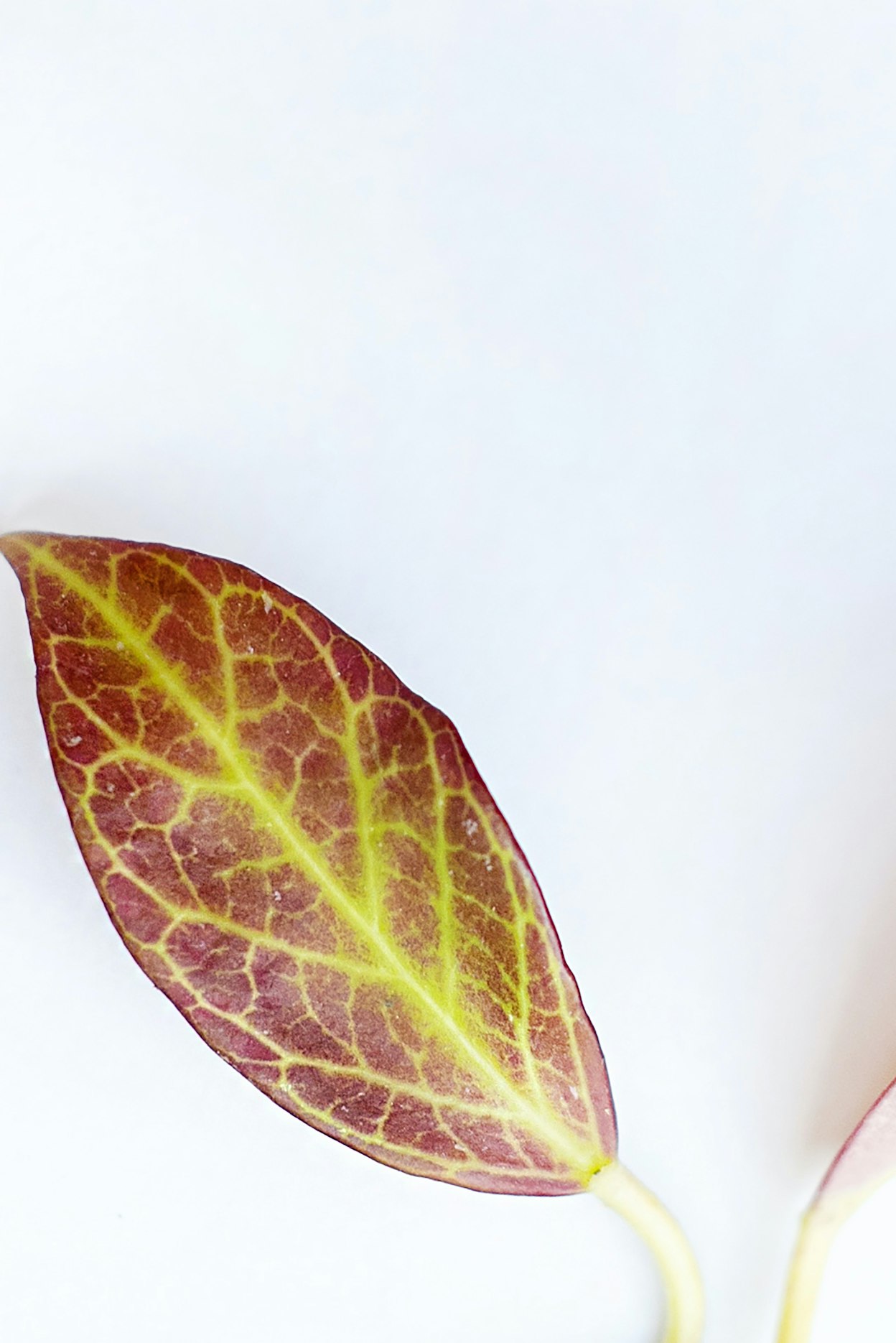
Watering
Hoya are sensitive to overwatering. In their natural environment, epiphytic Hoyas have roots that are typically only lightly covered by substrate, if not completely exposed, attached firmly within cracks and crevices within tree bark, where the rain from tropical downpours is easily accessed by the roots before being wicked away through the heat of the day, whilst humidity remains high. Because this isn’t something easily replicated in a home setting, instead aim to make sure to keep your potting medium light and airy. Consider adding some chunky components to your mix, such as perlite, bark, coco husk and charcoal to allow the roots to experience fast drainage and adequate air flow. I love to use terracotta pots for my Hoya (and many other plants), due to their porous nature which helps wick any excess moisture from the potting mix. If I know that I’ll be using terracotta, I might add a little less of the chunky components just to ensure it doesn’t dry out quicker than I can get round to watering it! If roots are kept dry for extended periods, they become desiccated and die back, which can lead to rot issues if you fail to realise and water too heavily in the future. On the other hand, if it’s going in a plastic pot, I’ll add some extra chunky pieces. Typically, Hoya with fleshier leaves tend to be more drought resistant, whereas those with fine leaves might require more frequent watering. As with most plants, a plant in a position with higher light intensity will require more watering than the same plant in a shadier spot. It’s also worth remembering that as the seasons change, watering frequency will too. During the winter months, when the days are shorter and natural light is less intense, they will need less water. Don’t be tempted to repot your Hoya too often either, they are perfectly happy being pot bound for several years or even more! Remember, the majority grow among the tight cracks of tree bark! The more roots in the pot, the less excess potting media, which means a reduced chance of overwatering.
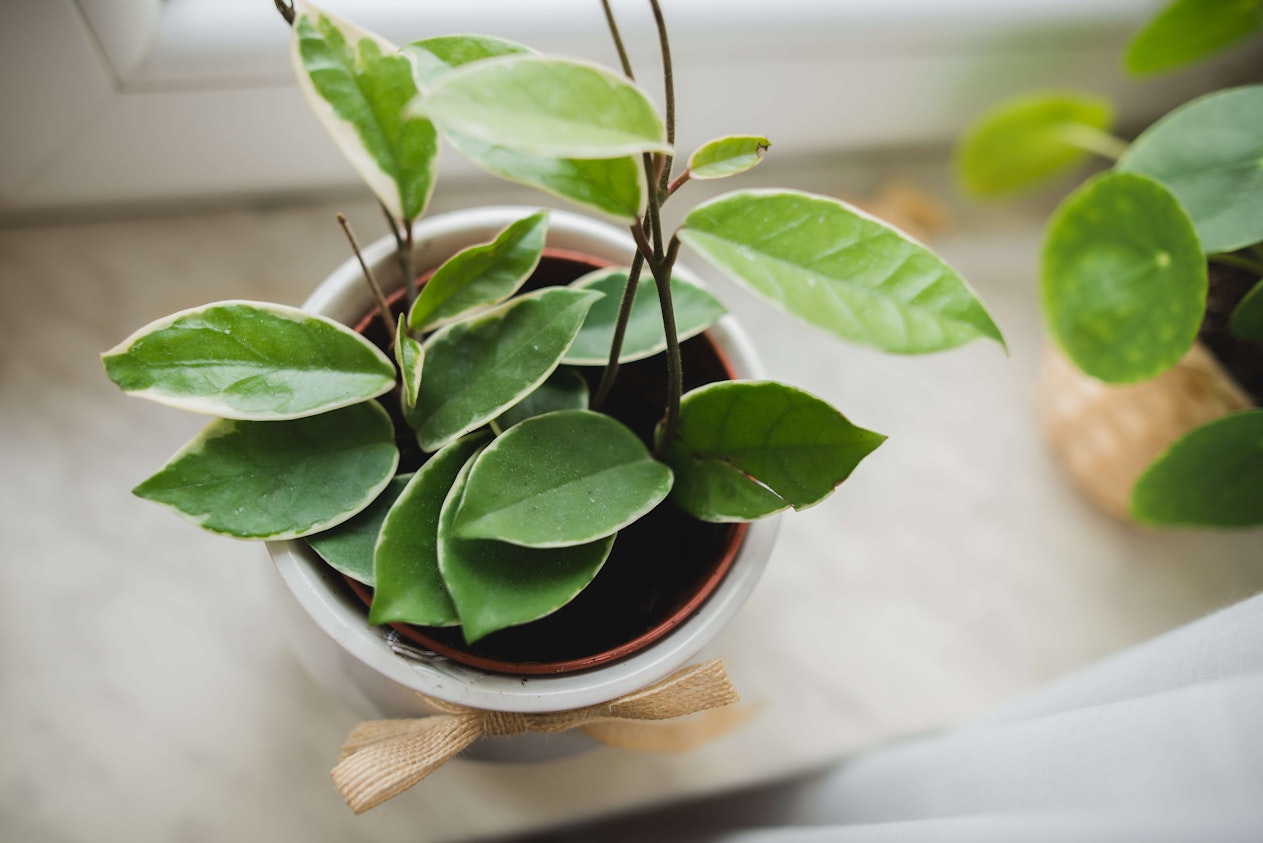
Humidity.
Hoya have evolved to live in humid environments, so try to replicate this in your home where possible. The extra humidity allows for better production of those adventitious roots, which over time can attach to any supports provided, such as a trellis, giving the plant more support and allowing for leaf size to increase. Humidity also helps prevent the new growth, which starts out incredibly fine and delicate, from desiccating and falling away. You can boost the humidity by using a humidifier, which is by far the most effective way to up humidity. Misting your Hoya will help boost humidity levels however this only provides a short-term fix, not to mention that heavy misting can cause bacterial and fungal infections if water droplets are allowed sit on the leaves for extended periods of time. Grouping plants can help create microclimates where humidity is higher, just be mindful that grouping plants can inadvertently help the spread of pests and other disease. Smaller plants can also be placed within a cloche, which is where I keep my H. serpens and the high humidity has caused an explosion of growth. Just be sure to open the cloche occasionally to allow for air flow, closed environments with stagnant air can encourage bacterial/fungal disease. If it’s a struggle to keep humidity high enough in your home for some fussier Hoya, then there are plenty of species who will adapt just fine to lower humidity, such as the ever-popular H. carnosa, H. kerrii or H. pubicalyx.
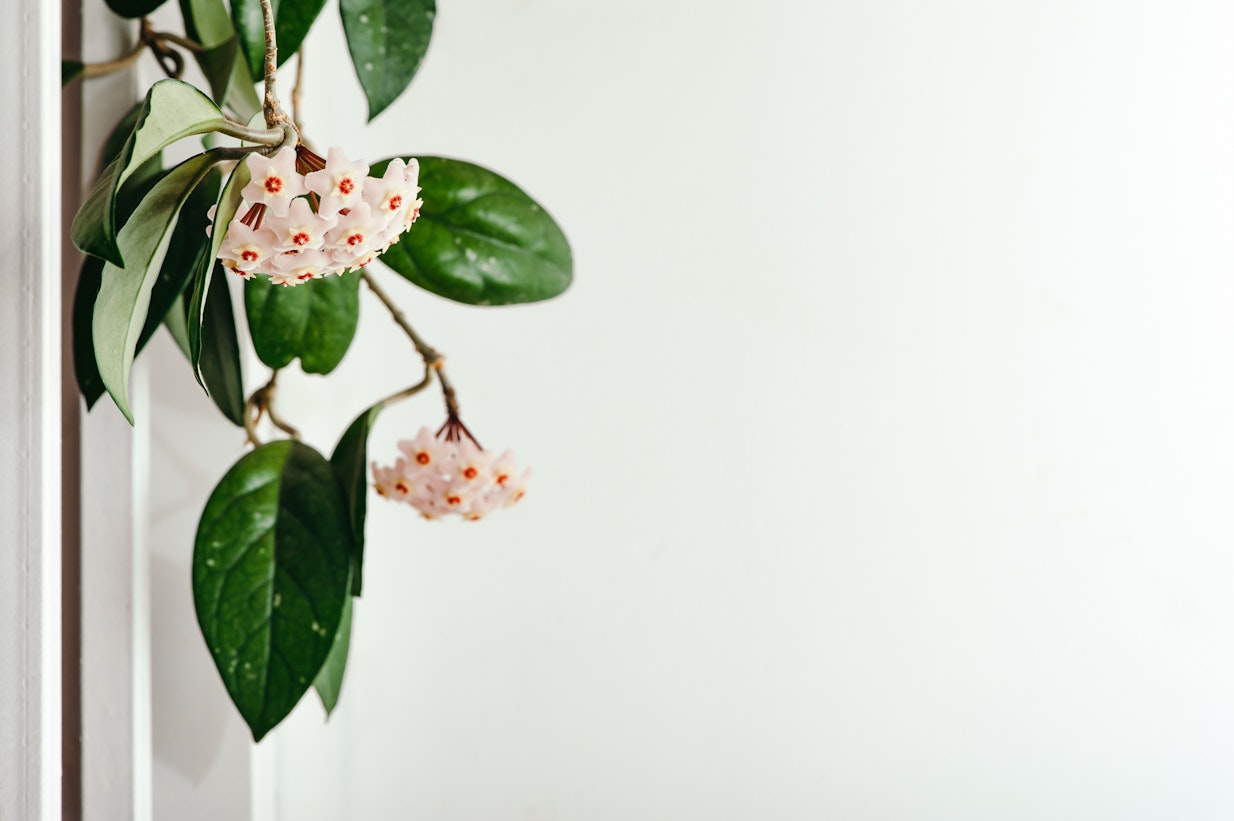
Propagating
I’ve found Hoya to be very easy when it comes to propagating. Initially, I began rooting my cuttings in water, which worked however I felt that the new roots were particularly fragile, and I had to re-root the same cuttings repeatedly on occasion. Now my preferred method is to simply take a cutting and then pop it directly into moist coco coir with some perlite. Keeping the coir moist is essential for encouraging new roots to form, even though this may appear contradictory when you consider the lower moisture needs of well-established hoya. I like to do this in clear containers so as the roots develop, I can gradually begin to lower to moisture content of the mix. Once I am happy with the new root system, I simply move the plant over into a regular, chunkier hoya mix. I’ve also had great success simply popping cuttings into a sealed prop box with moist perlite or sphagnum moss and closing it up and just letting them do their thing. I should add that after placing your cuttings in your chosen propagating vessel, try sitting them on a heat mat (or any lightly warm surface, as long as there is natural light). The added warmth really helps speed up root formation.
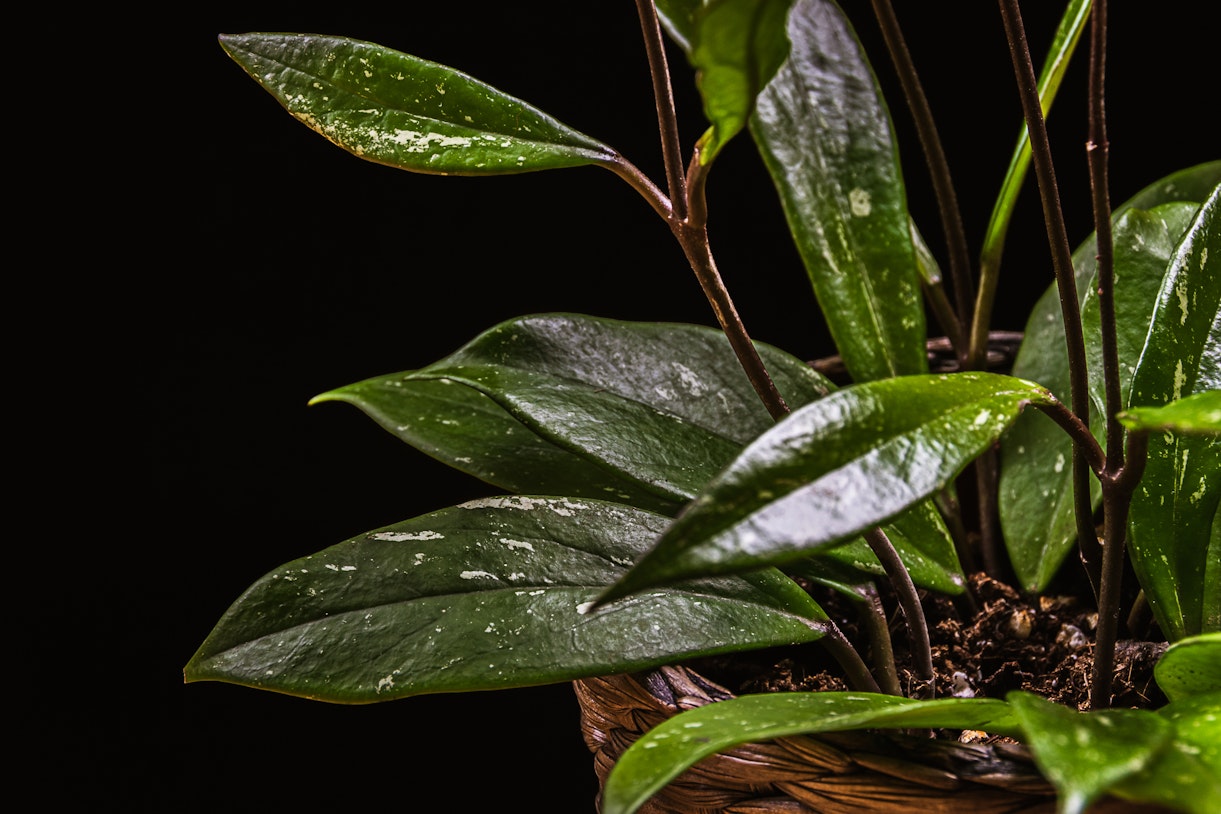
Temperature
Hoya really aren’t too fussy when it comes to temperature, if your home is comfortable for you, then it’s likely your hoya will be perfectly fine. Just ensure during colder months you keep them away from any cold and drafty windows. Despite them not being too fussy when it comes to your average household temperature, they really do explode with growth when both the humidity and temperature are raised!
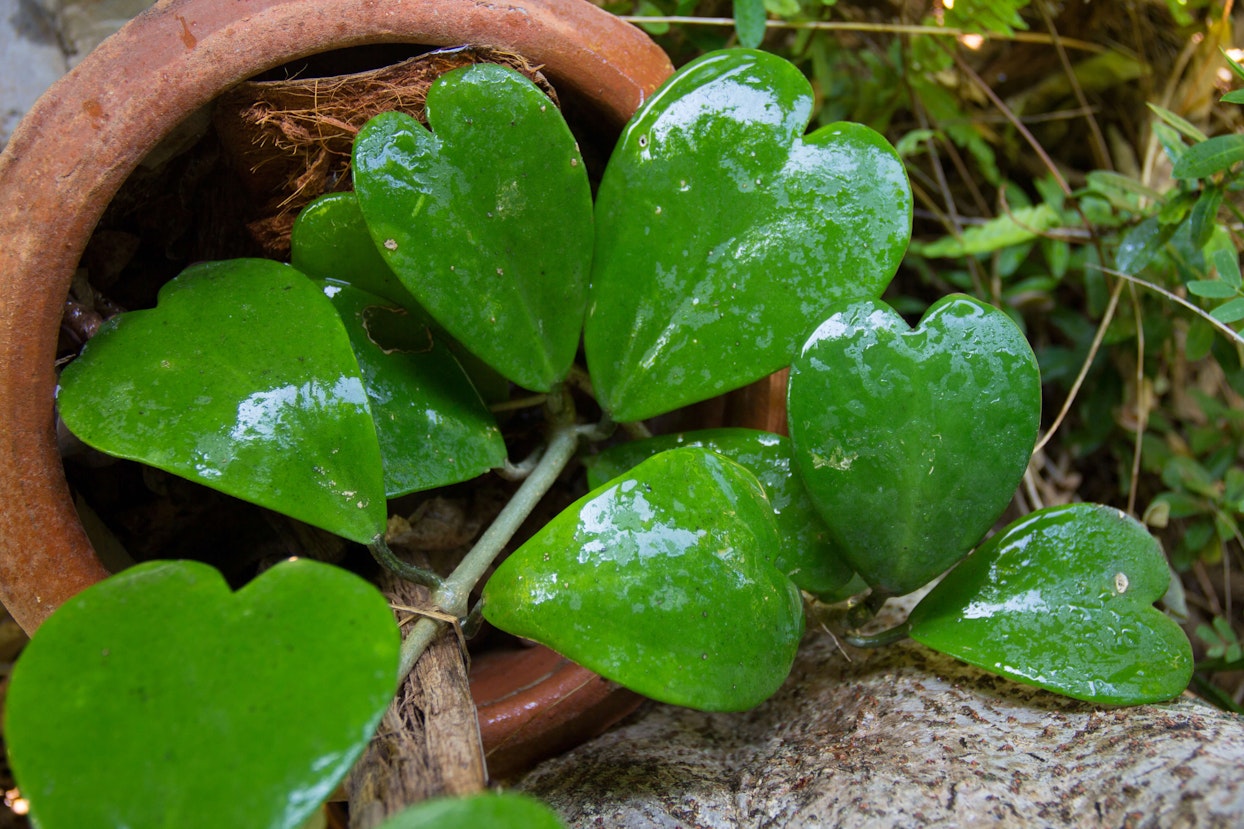
Some extra notes…
I’ve recently found out about the importance of trellising Hoya, and of course it makes sense, they climb in nature so why should this behaviour change once we bring them indoors. Larger leaved Hoya benefit most from a trellis, as they tend to send out long tendrils lacking mature leaves if they aren’t supported. When you trellis your Hoya, make the trellis bigger than necessary to avoid having to replace it too soon and disturbing your plant. They also naturally twine anti clockwise, so bear this in mind if offering them a helping hand.
Most Hoya seem unpalatable to most pests, likely due to their tendency to have thicker and waxier leaves making it a little harder for pests to pierce the cuticle. However, keep a close eye on new leaves, as these are softer and make for an easy meal. Be on the lookout for mealy bugs too, who like to wedge themselves in the tight joints between the leaves and stem.
Now for the final and most important piece of information throughout this whole blog! Many Hoya are at risk or endangered in their natural environment, due their vulnerability of being torn down during deforestation for agricultural land use or due to logging. They are also threatened by illegal poaching, due to the increase in demand for ornamental plants (as are many other plant genera too!) so ensure when searching for your perfect Hoya, you’re buying plants produced or sourced by reputable and responsible sellers.
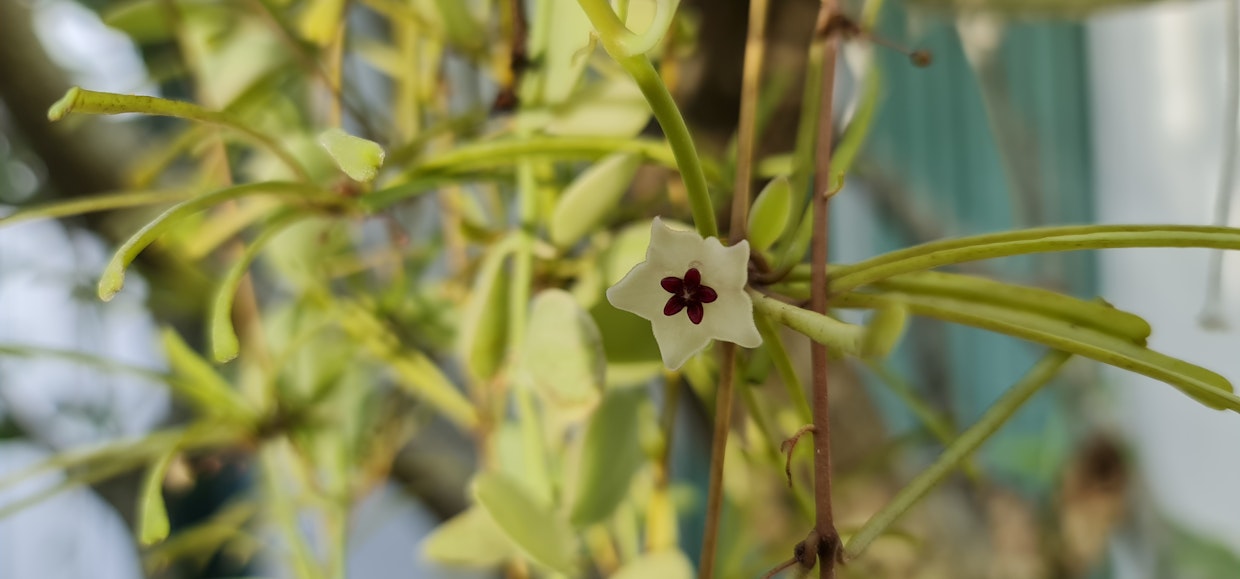
References.
Altenburger, R., Matile, P. (1988). Circadian rhythmicity of fragrance emission in flowers of Hoya carnosa R. Br. Planta, 174, 248-252.
Kleijn, D., Donkelaar, R. (2001). Notes on the taxonomy and ecology of the genus Hoya (Asclepiadaceae) in Central Sulawesi, Blumea, 46, 457-483.
Landrein, S., Zi-Yu, Z., Song, S. (2021). Pollinators of Hoya pottsii: Are the strongest the most effective?, Flora, 274.
Mochizuki, K., Furukawa, S. and Kawakita, A. (2017), Pollinia transfer on moth legs in Hoya carnosa(Apocynaceae), American Journal of Botany, 104, 953-960.
Rahayu, S., Fakhrurrozi, Y., Putra, H. (2018). Hoya species of Belitung Island, Indonesia, utilization and conservation, Biodiversitas, 19, 369-376.
Rodda, M. (2012). Taxonomy of Hoya lyi, Hoya yuennanensis and Hoya mekongensis (Apocynaceae – Asclepiadoideae, Edinburgh Journal of Botany, 69.
Rodda, M. (2015) Two new species of Hoya R.Br. (Apocynaceae, Asclepiadoideae) from Borneo. PhytoKeys, 53, 83-93.
Rodda, M., Juhonewe, N., Ercole, E., Tate, J. (2013). Hoya corymbosa (Apocynaceae, Asclepiadoideae), a New Unusual Species from Sabah, Borneo, and its Systematic Position based on Phylogenetic Analysis, Systematic Botany, 38, 4, 1125-1131.
Tania, U, Hassan, M., Eshita, N., Akhter, R., Shahriar, M. (2016). Evaluation of In vitro Antioxidant and In vivo Pharmacological Activity of Leaf Extracts of Hoya parasitica, Journal of Applied Pharmaceutical Science, 6, 5, 163-170.
Wanntorp, L., Grudinski, M., Forster, P., Muellner-Riehl, A., & Grimm, G. (2014). Wax plants (Hoya, Apocynaceae) evolution: Epiphytism drives successful radiation. Taxon, 63, 1, 89-102.
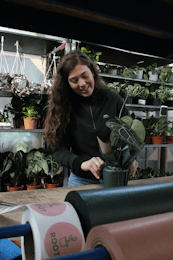
Hannah Cockett
Hannah started off as a customer at Root, she talked with Lisa about her plants, her favourites and those she wished to own. Her love of plants and her enthusiasm shone through. When there was an opportunity to employ a new staff member, Lisa knew Hannah would be perfect for the role. Hannah has a degree in Zoology and a post graduate diploma in Environmental Forestry. She now works in the environmental sector at the Borders Forest Trust. Hannah is completely enamoured with the natural world, spending downtime growing fruit and veg, exploring the woods around her, trail running and hanging out with her partner and pets.
More by Hannah CockettRelated Articles
View all articles
